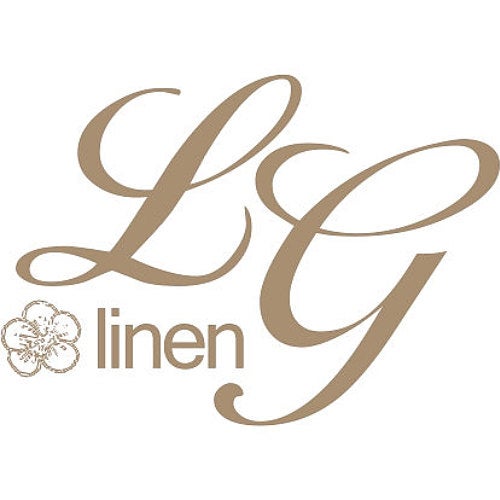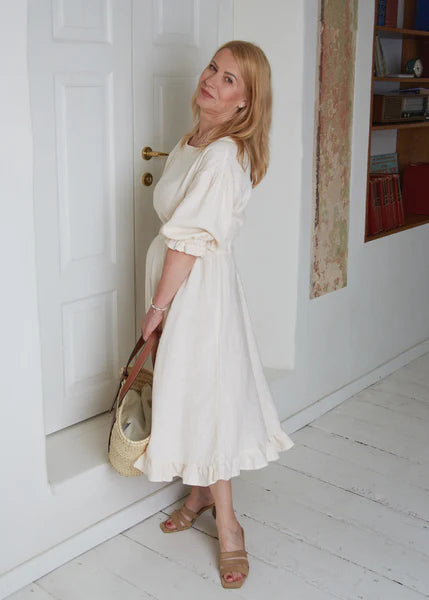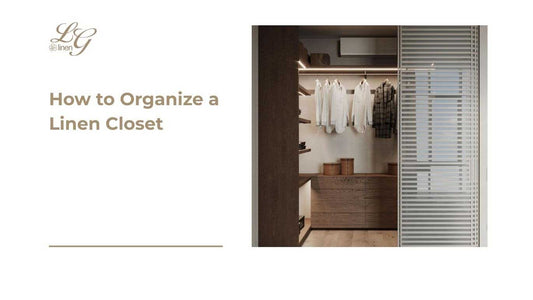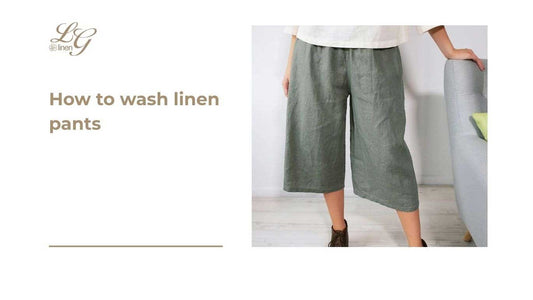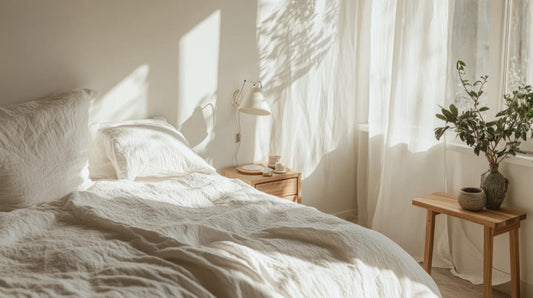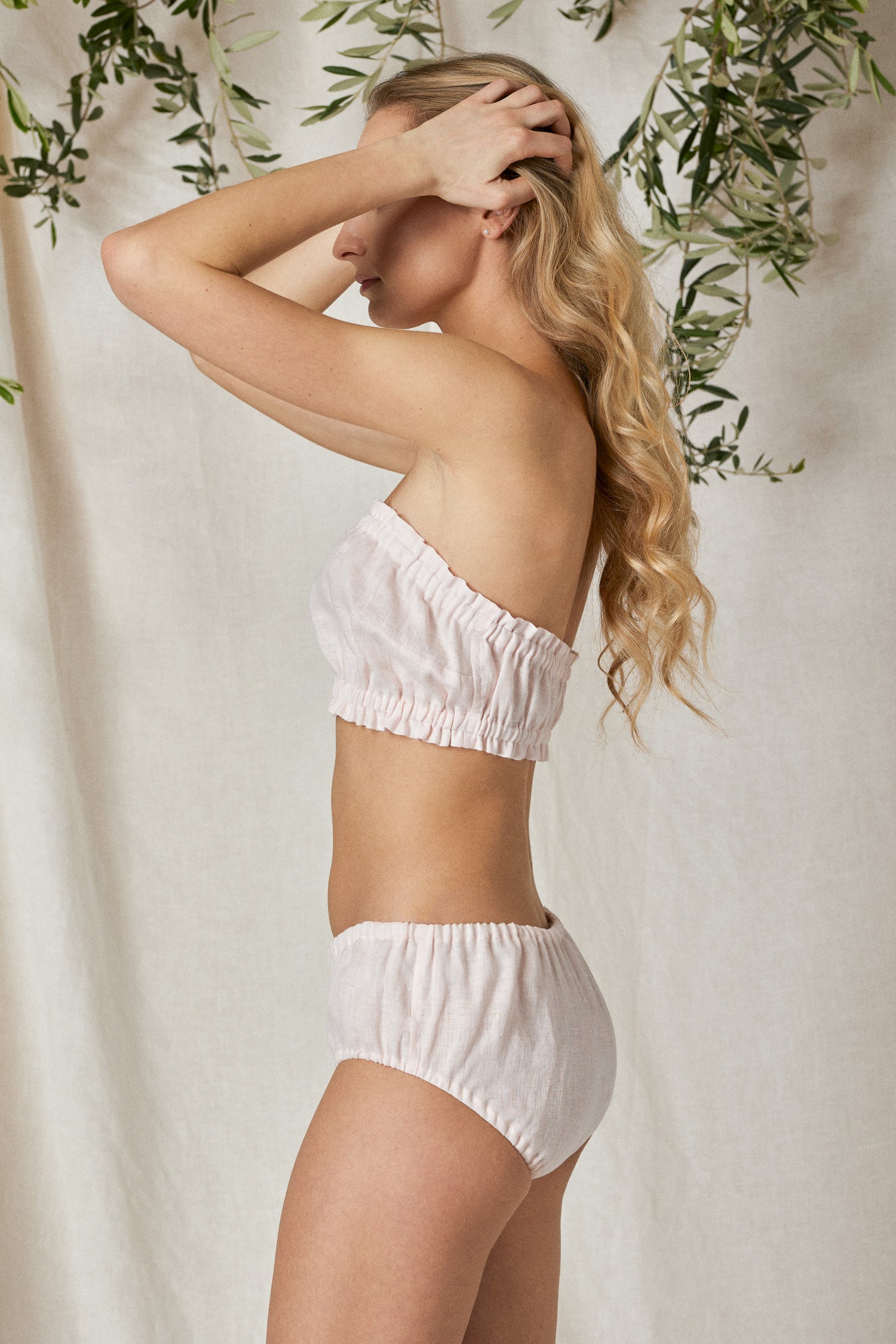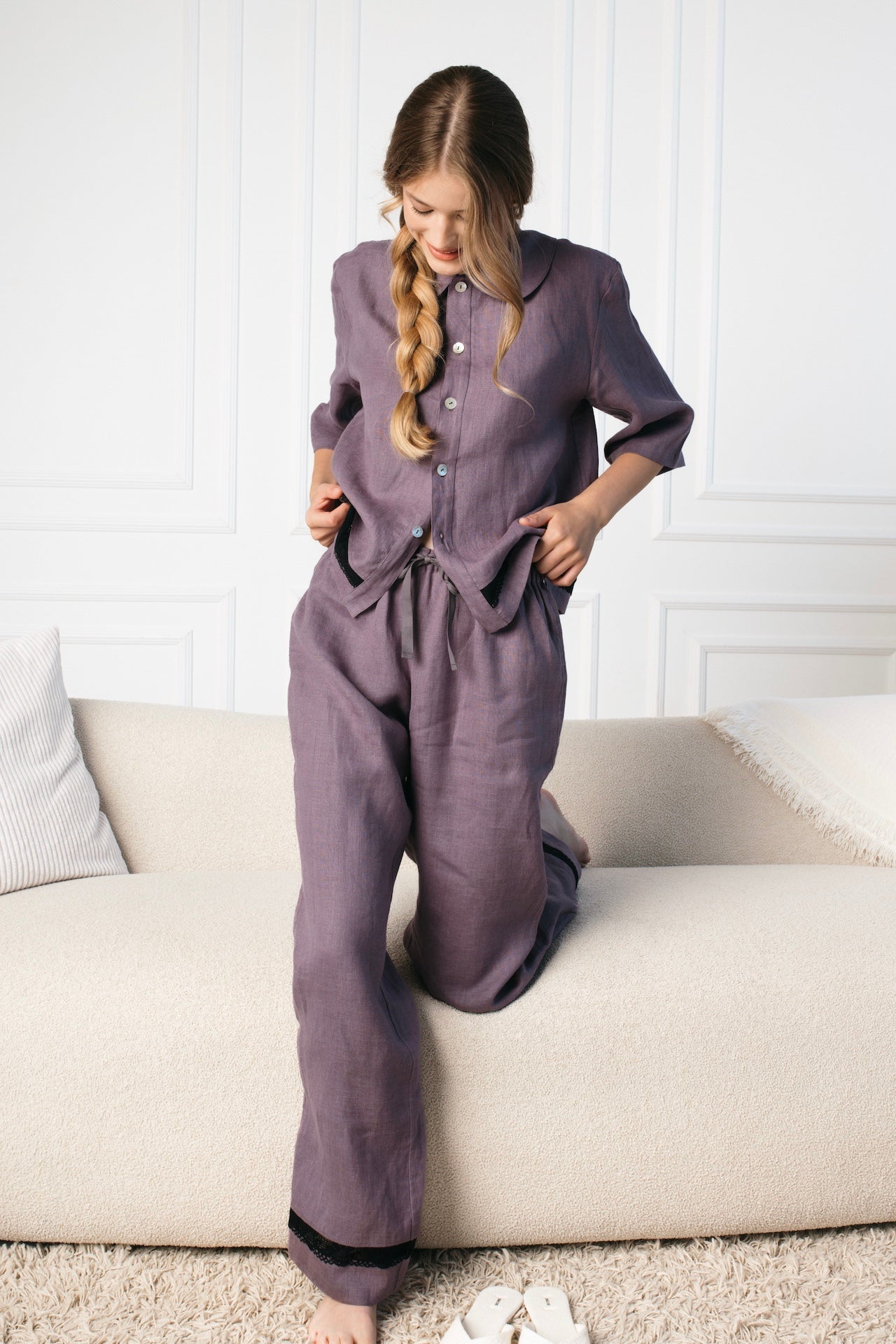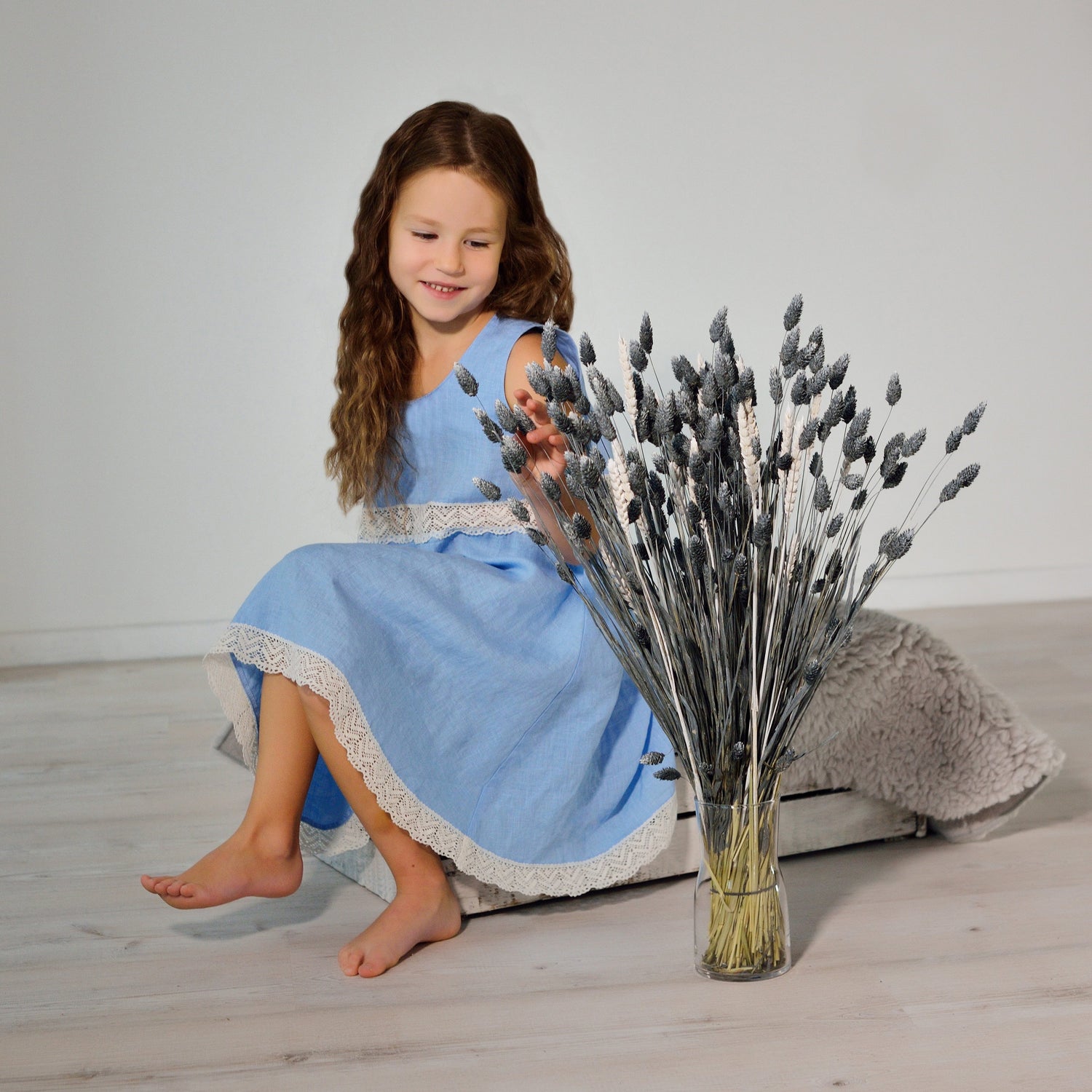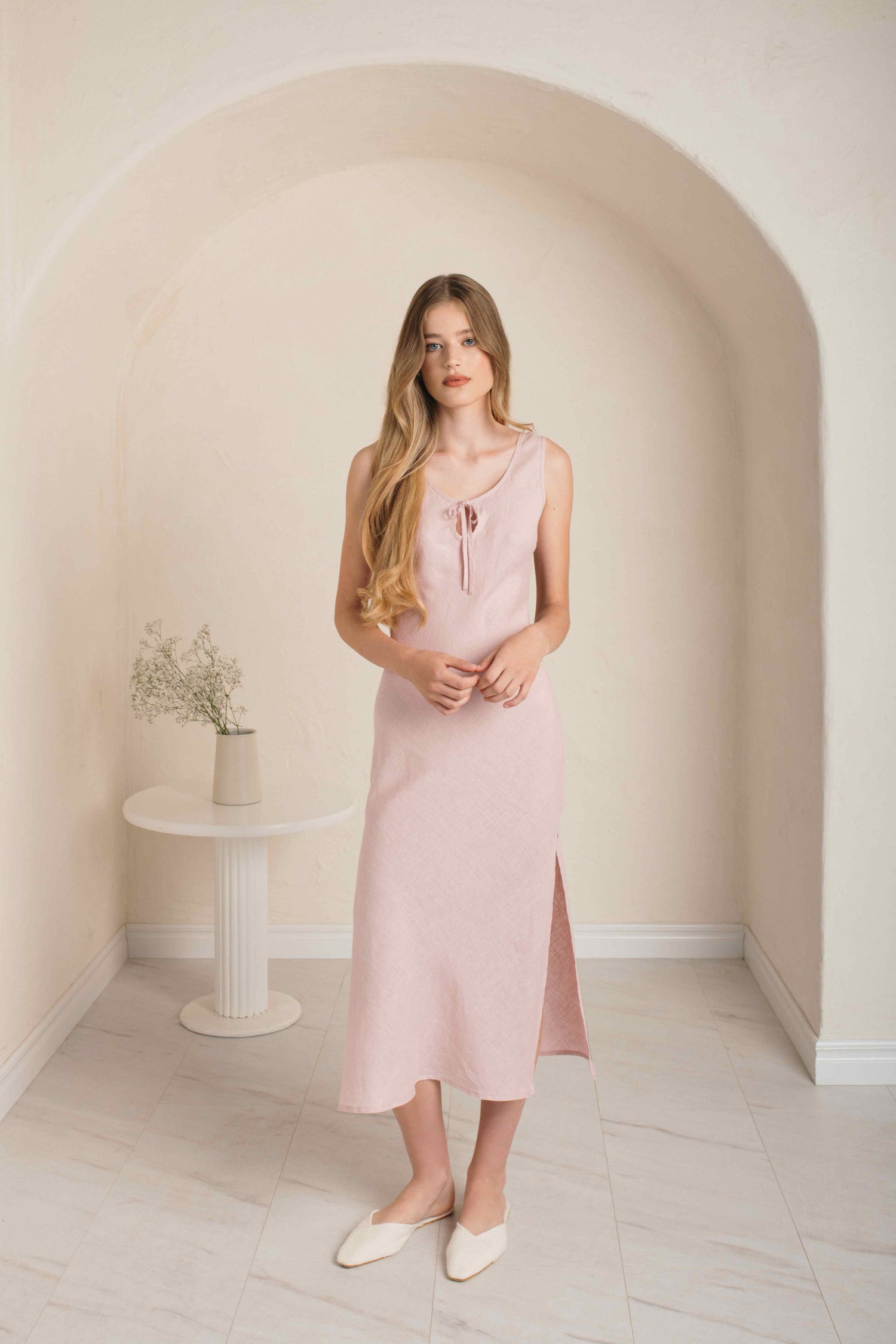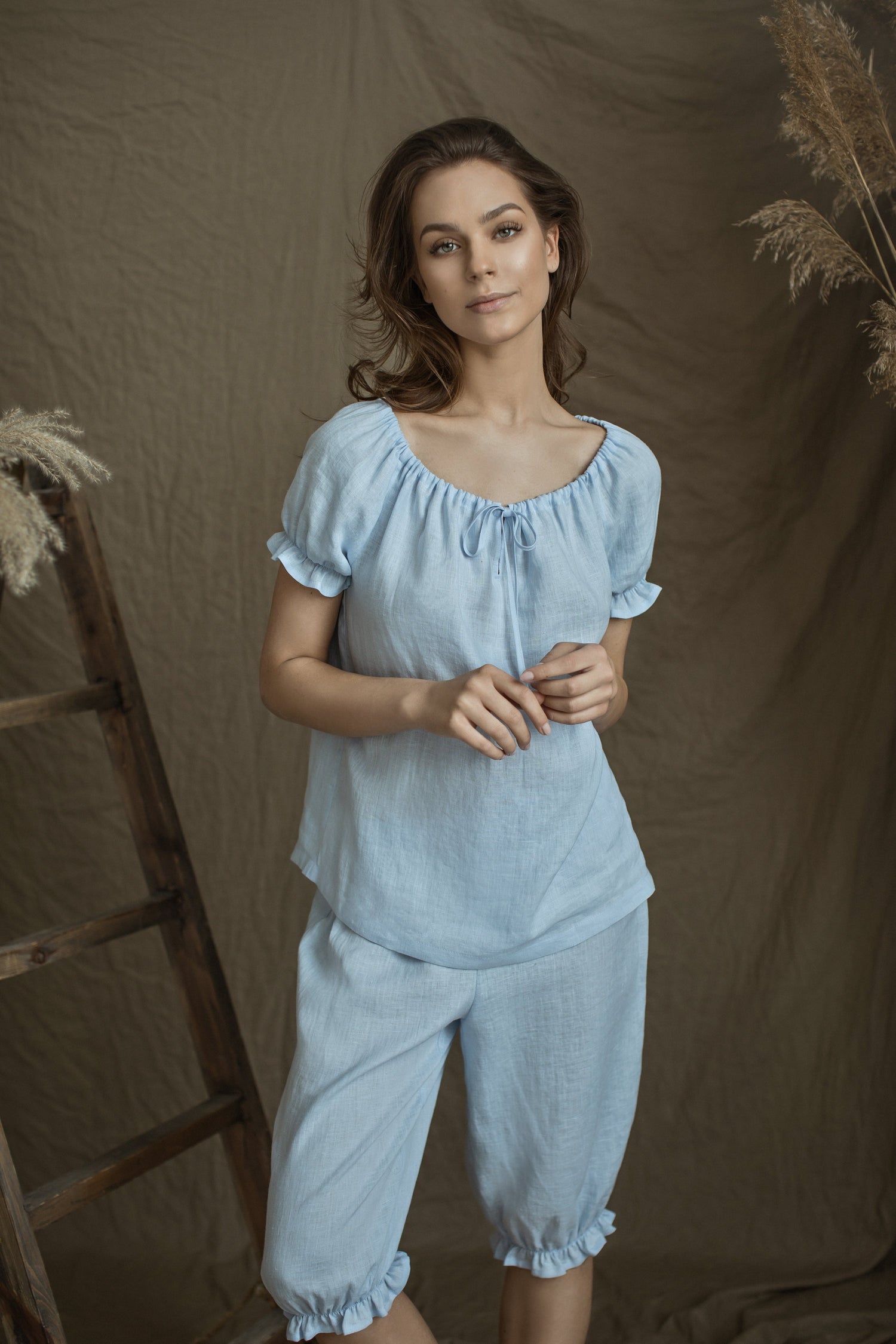Linen is versatile and widely used fabric, composed of natural fibers derived from the flax plant, scientifically known as Linum usitatissimum. Linum usitatissimum is a flax plant commonly cultivated for its valuable fibers, from which linen fabric is produced. Linen fabric is a plant based textile renowned for its strength, duradurability, and exceptional breathability.
Linen fabric is characterized by its distinctive properties. It is lightweight, absorbent, and possesses excellent breathability, making it ideal for warm climates and summer wear. The fabric's breathability allows air to circulate, preventing excessive perspiration and maintaining a cool, comfortable feel. Linen fabric has abilityto soften and improve with time and use. At first, the fabric can feel slightly stiff, but it gradually becomes softer and more supple through a process called "breaking in." This characteristic endears linen to many individuals seeking a fabric that gains a charming, lived-in quality over time.
Additionally, linen has high tensile strength, which contributes to its durability and resistance to wear and tear. Linen fabric has slightly irregular texture and slubs, which are small knots or thickened areas in the yarn. These fabric imperfections add to its unique character and are often embraced as desirable qualities rather than flaws.
Where do we get linen from?
We get linen from the fibers of the flax plant, scientifically known as Linum usitatissimum. Cultivated in various regions across the globe, including Europe (Belgium, France, and Ireland) and parts of Asia (China and India), flax plants are carefully grown and harvested. The mature plants are either pulled or cut close to the base to obtain their long, sturdy fibers. These fibers undergo a process called retting to separate them from the woody stem. After refining and spinning, the resulting yarn or thread is used to create linen fabric, known for its strength, breathability, and aesthetic appeal in clothing, bedding, and home textiles.
How is linen made?
Linen is crafted from the fibers derived from the stems of the flax plant, Linum usitatissimum. The process begins with harvesting the flax plant, followed by retting to separate the fibers. Afterward, the fibers are spun into yarn and woven to create linen fabric. Linen's unique qualities, including its high breathability and absorbency, make it particularly desirable for homeware applications and clothing in hot and humid climates. Its natural luster and slightly irregular texture lend a distinct charm to linen garments, making them a popular choice for those seeking both comfort and aesthetic appeal.
What is the difference between linen and cotton?
- Linen is derived from flax fibers, while cotton comes from cotton fibers.
- Linen is known for its exceptional durability, with its fibers being thicker and possessing higher tensile strength compared to cotton.
- Linen fabric offers superior breathability, allowing air to flow through the material more effectively than cotton. This makes linen a preferred choice for warm climates.
- Cotton fabric is renowned for its softness and comfort against the skin. It provides a gentle and smooth texture, making it a popular option for everyday wear.
These differences in source, durability, breathability, and comfort make linen and cotton suitable for different purposes and environments. Linen is often favored for its durability and breathability in warm weather, while cotton excels in providing comfort and softness.
Is linen better than cotton?
Linen fabric possesses certain advantages over cotton. It is approximately 30 percent stronger, offering enhanced durability. Linen also provides better breathability, allowing air to circulate more efficiently. However, the perception of "better" depends on individual preferences and specific use cases.
Why is linen so expensive?
There are 4 primary factors that contribute to the higher cost of linen. These include labor-intensive production processes, limited cultivation regions for flax plants, the requirement for skilled craftsmanship, and the desirable properties and durability of linen fabric. These four factors collectively influence the relatively higher price of linen compared to other materials.
Does linen wrinkle?
Linen fabric has a tendency to wrinkle more easily compared to other fabrics, including cotton. This is due to the nature of linen fibers. However, some people appreciate the natural, relaxed look of linen wrinkles as part of its charm and character. Proper care, such as ironing or steaming, can help minimize the appearance of wrinkles.
